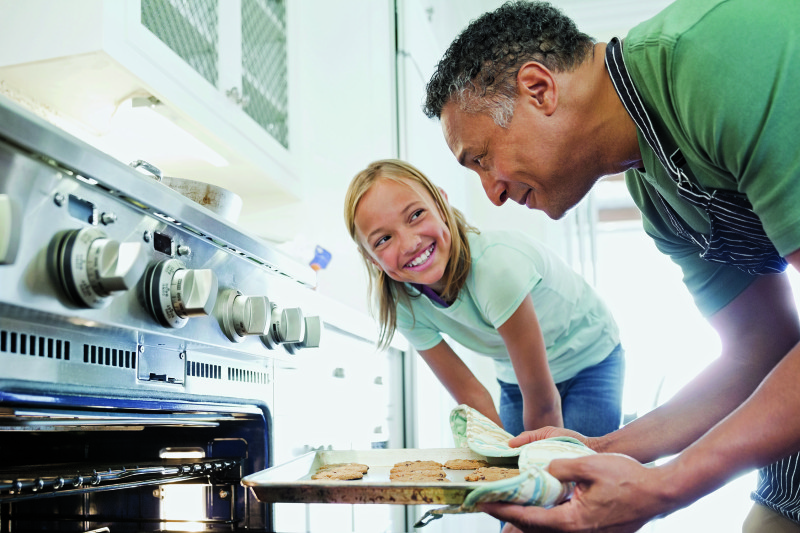“What I found with more affluent families is that they were spending so much time and energy trying to provide the goods, and the good life for their children, they often neglected the effort to bring out the goodness in children.” -Robert Coles, The Moral Intelligence of Children (Random House, 1997)
Source: Bright Horizons

As parents, it’s natural for us to want to give our children the things we didn’t have. And in today’s world, it’s often easy to confuse the wants of our children with their actual needs. Often we respond to every “I want” because we can and it makes us feel good, not necessarily because we should. Especially during the holidays, many of us tend to give generously to our children even those of us who typically practice moderation.
There are an infinite numbers of toys, games, and treats in today’s world. And no matter how much our children have, they will always want more, and there will always be a friend who has more. How can we change this mindset and raise caring and giving children that know the importance of giving rather than getting? How do we avoid over spoiling our kids during the holidays?
Here are some tips on how we can teach our children to moderate their wants, be thankful for what they have, and give to others.

Tips to Minimize Spoiling Your Children during the Holiday Season
One way to help children understand the importance of giving and gratitude during the holiday season is to teach them about moderation whenever possible.
Even though you may be able to afford gifts for children, try not to get in the habit of buying your child something every time you go in a store, even if it is just gum or candy they want.
When you are shopping and allow your child to buy something, avoid giving your child too many choices. When you go to a store, try letting your child make a selection just from the book aisle or the arts and crafts area.
Actively teach your children as they mature that media advertising is trying to shape our thinking to want more and more.
Make quality family time the major holiday goal that children look forward to, even in shopping expeditions. For example, adding breakfast or lunch at a restaurant to your shopping trip can become its own cherished tradition.
Moderate the shopping goals to the energy and developmental level of your child. Encourage your child to give to a child in need through Toys for Tots or other similar programs, and include that in the shopping goals.
Encourage grandparents to show some restraint, perhaps giving gifts of time or piggy-bank savings.
As a family, model restraint and sharing with the less fortunate through local programs to aid the impoverished and homeless here and in other countries. If you don’t have a favorite charitable organization, consider The Bright Horizons Foundation for Children. The Bright Spaces program creates play spaces for children who live in homeless shelters.
Teaching Kids to Give Back during the Holidays
“It’s better to give than to receive” is an old adage that we’ve all heard. A study by the American Psychological Association suggests that giving to others increases life expectancy by at least 5 years. A stretch? Maybe. But if you and your child shovel the snow from your elderly neighbor’s sidewalk this winter, you may be doing yourself, your child, and your neighbor a favor. We can start with the very small and teach our children about giving to others in need. Young children can learn to give back during the holiday season by giving a kind word, offering a smile, sharing a toy, drawing a picture, writing or dictating a note, or comforting a friend or family member. And as they grow, so will their generosity.
Here are some additional family giving ideas for helping and giving to others that you can do with your child during the holiday season and at any time of the year:
Collect clothing or personal items and donate them to a local shelter for the homeless.
Make favors, scrapbooks, napkin rings, or crafts for a special occasion to donate to a local children’s hospital.
“Adopt” a senior citizen and help him or her with necessary chores or visit an elder care home.
Plan or cooperate with existing paper drives or other recycling endeavors.
Collect food for local food banks.
Make greeting cards for people in a veteran’s hospital or other health care facilities.
“Adopt” a service person stationed overseas, collect items and send them a gift box.
Make toys, games, or crafts for a child care center or pediatric unit of a hospital.
It’s a lot easier to write about swimming upstream in the material world than living those words. Teaching valuable lessons like the importance of giving and helping others is a difficult task for all parents, so we ought to do what we can and celebrate that, not beat ourselves up because there is so much more that we could be doing.
For more information about Bright Horizons visit www.brighthorizons.com





